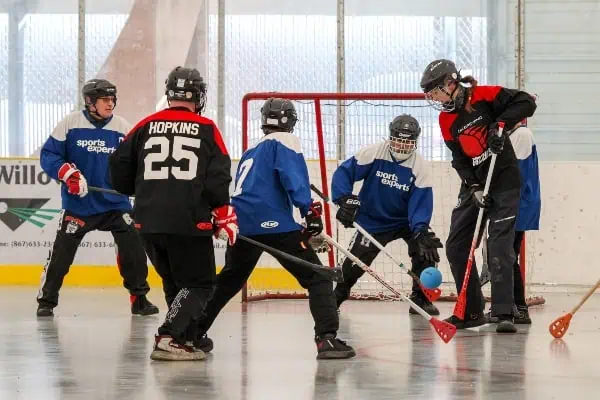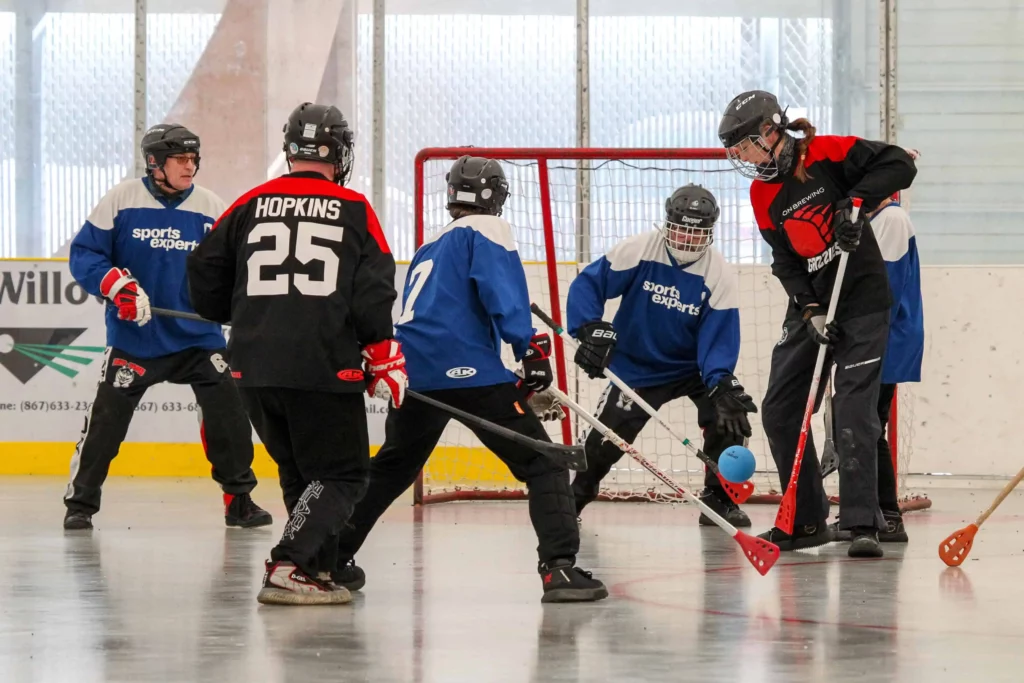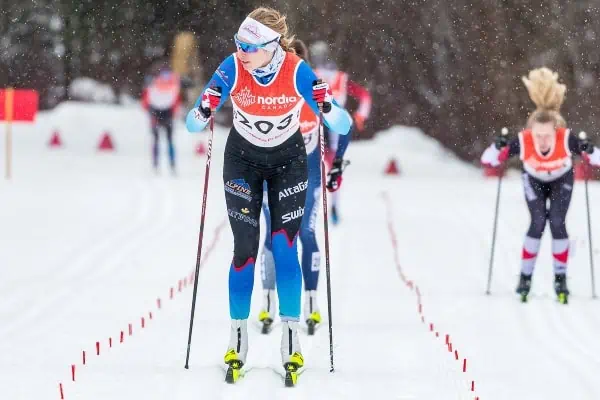Eric Allen keeps his hand close to the supporting foot of a young climber as he coaches the six-year-old through his first successful climbing problem during the 8th Annual Ibex Valley Bouldering Festival.
The bouldering festival is one piece in the mosaic of the ever-expanding Yukon climbing community.
Bouldering is a style of rock climbing conducted without a rope. For that reason it is usually limited to shorter climbs so that a fall off the rock won’t result in injury.
For more than two decades, the Ibex Valley has been home to a small but dedicated group of boulderers who love to share their little piece of paradise with the world.
“We started the bouldering festival to introduce the wider Yukon community to the joy of the sport,” Allen explains.
“Over the years we’ve toyed with the idea of hosting it in other locations throughout the territory, but we always end up coming back to the Ibex. It has history for the community, it is accessible for all skill levels, and it’s beautiful.”
The majority of the participants at the August 7 bouldering festival were new climbers, many testing themselves against the rock for the first time.
As he lined up to take his shot at the dyno competition (a short form of the word “dynamic” referring to a climbing move that requires participants to jump to their next set of handholds), seven-year-old John Tipton spoke about his experiences during the day.
“It’s so much fun,” he said. “Sometimes it’s hard, and a little bit scary, but then you get to the top and it’s really exciting.
“It’s really cool watching the older climbers,” he added. “I want to be able to climb like them some day.”
When they weren’t guiding newcomers through the maze of boulders covering the floor of the Ibex Valley, or playing on high-lines 20 feet above the ground in daring impersonations of tight rope walkers, the more experienced climbers were working their own sets of problems and inspiring their young protégées to imagine new levels of possibility.
Sierra Allen, Loic Markley, and Steve Townshend spent the better portion of several hours working out the intricate combination of movements that would get them up a V9 problem (equivalent to a 5.12d in free climbing rating scales).
The “V” or “Hueco” rating scale is unique to bouldering, and allows climbers to rank the difficulty of the problem they are climbing.
With a roar of support from the onlookers gathered below, Townshend managed to take the first ascent of the problem. He also won the men’s dyno competition, flying a mere eight and half feet between handholds to clinch his victory.
After yanking his feet out of his climbing shoes he settled in to coach others through the route.
Bouldering is just one part of the Yukon’s climbing scene, however.
As climbing continues to develop in the territory, with new routes continually under development, the majority of useful information continues to be stored as “tribal knowledge” in the heads of a select few.
This makes it increasingly frustrating for new climbers to find their way into the world of the sport. Enter Ryan Agar.
Agar has been seriously climbing for the last six years.
“I was really frustrated that I couldn’t find the rock faces and routes that people would tell me about. The information wasn’t reliable – I felt like I was chasing a rumour,” he says.
“That’s when I realized I probably wasn’t the only person feeling this way and that I should really do something about it.”
And that is exactly what he did. Agar has spent the last three years compiling a climbing guide for the Yukon, due out later this month.
“When I started I sometimes felt that with the exception of a few long-time climbers it was just me, armed with a book and some vague directions, flailing around in a canyon somewhere,” he says.
Agar estimates there now at least 60-70 dedicated climbers who spend the majority of their free time on rock, and another 250 who climb regularly.
“With those sorts of numbers, and interest in the sport continually on the rise as more people begin to realize the quality of opportunities available in the territory, the few spots commonly known are getting busy,” he says.
“I really hope that this new guide will allow people to move farther afield and explore some new areas they may not have been yet.”
The new guide will provide detailed information on 14 climbing areas in the Whitehorse area, around Paint Mountain in Haines Junction, throughout Southeast Yukon, near Dawson, and in Southeast Alaska, specifically near Haines and Skagway.
Readers will find detailed directions and route information, history and gear required, as well as GPS coordinates because, as Agar puts it, “90 per cent of climbing in the territory is finding the bloody crag.”
“As the territory’s climbing community has grown, so has the support,” says Agar.
“Newcomers can now join Climb Yukon [http://www.climbyukon.net/], attend climbing socials, and practise their skills inside at Yukon College and the Carcross School. Hopefully this guide will fill a missing piece in the puzzle.”
Amber Church is a painter, writer and sports enthusiast. You can reach her at [email protected].




